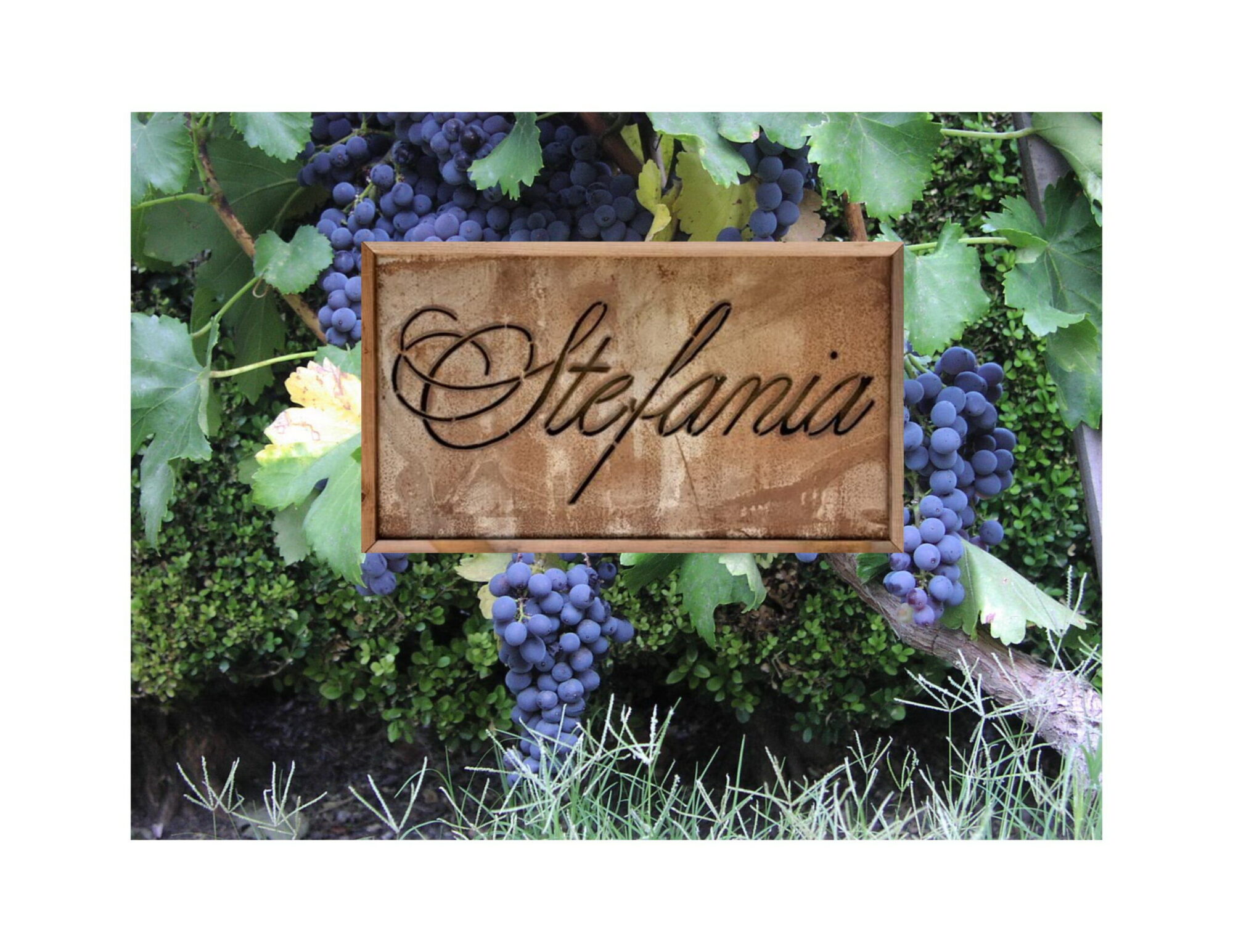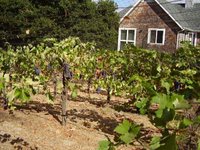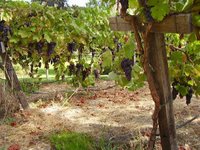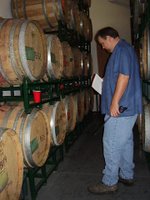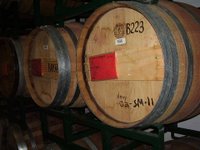Even though we now harvest and buy tons of grapes from our own vineyards and vineyards around the state, I still like to keep up the first 50 plants we put in at home. It’s still a good way to learn and experiment on a small scale. I’ve also learned to use the little home vineyard as a way to judge how the season is going in the other vineyards.
Because we live in something called the “West Valley Thermal Zone” everything happens at home 2-3 weeks before it happens in the other vineyards, so it’s a good signal when I need to do things in the mountain vineyards, like spray, or prune or harvest.
So I harvested the 200 pounds or so of grapes last Saturday and started to make a little wine in the garage. I pick out any bad grapes as I go, and sort through them again before I put then in a food grade plastic bin to ferment.
Then it’s I Love Lucy time. I jump in the bin and smash the grapes with my feet. Just enough to release the juice and leave some whole berries.
I’ve been experimenting with something I’ve called partial native fermentation. Basically I heat the juice enough (about 95f) so the yeast that are in the garage/winery and on the grapes start to ferment. Native fermentations can give you more complex flavors and better color. The risk of that is that you can get jumping fermentations that go fast and then slow or stop all together ruining the wine.
So I’ve been letting the fermentation start on its own, then as it starts to slow a bit, I add cultured yeast to finish the job and avoid the risk of ruining the wine.
That was the plan anyway. The juice was stubborn and fermentation did not start on its own, I didn’t want to risk spoilage, so I added cultured yeast to kick off fermentation. It’s burbling along just fine now, turning into wine.
I good reminder for me, even if you have a winemaking plan, you need to stay flexible and do what the wine needs, and lessons like that are why I keep making that small batch of wine in the garage every year. Every thing you learn, no matter what the scale, turns out better wine in the end.
